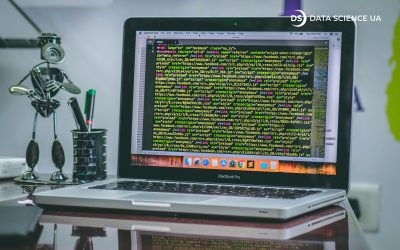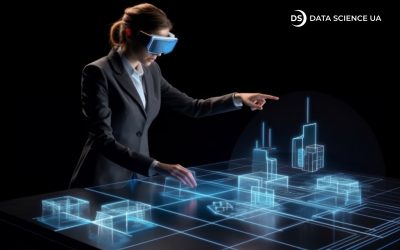Computer Vision Applications Examples Across Different Industries
Allowing computers and machines to see the world in the same way humans do was one of the leading tasks of computer science in general from the moment it appeared as a discipline. So it’s no wonder when Computer Vision, the technology capable of analyzing regular images from any camera and transforming them into meanings and decisions, announced itself, it started changing the surrounding industries almost immediately.
By now, Computer Vision is a multi-billion dollar field, with Computer Vision applications triumphantly finding their way into an incredibly diverse range of companies and projects and establishing themselves as a part of our daily routine. This article will overview the present popular, rising, or innovative Computer Vision applications that already are or would shape the field in 2021 and beyond.
Afterward, we will overview some promising Computer Vision project ideas that can give a creative foundation for the field’s interest. Then, we will also try to sketch how it will develop in the future.
What is Computer Vision now?
Right now, the application of computer vision is one of the biggest in the AI domain. In recent years, Computer Vision has developed into a field with very specific tasks, deeply oriented on solving distinct classes of problems, or even a particular problem, with incredible accuracy.
The majority of the development’s driving force continues to be the Convolutional Neural Networks (CNNs), which were the main factor of the field’s rapid progress. New findings on their technology create state-of-the-art performance, and this process is very likely to continue doing so for a prolonged period.
We can generally place Computer Vision tasks in four categories: image classification, segmentation, detection and tracking, and information retrieval from the visual data.
According to the report published in September 2020 by Grand New Research, Computer Vision has reached a value of US$19 billion in 2019 and is expected to grow further. Right now, the biggest volume of Computer Vision usage is in the manufacturing quality assurance and control area, which in 2019 accounted for more than a quarter of the market. Healthcare, the automotive industry, agriculture, and personal electronics are also among the front-runners in the industry implementation. Most of them we will outline in our coming sections.
ML also becomes popular, so in order not to stay behind, look at machine learning services.
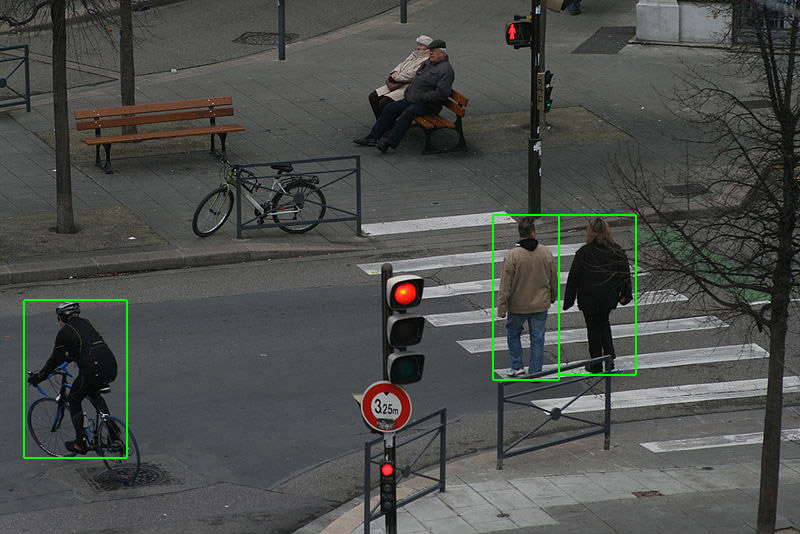 Picture 1. Example of pedestrian detection with Computer Vision // ll0zz, Indif; Wikimedia Commons
Picture 1. Example of pedestrian detection with Computer Vision // ll0zz, Indif; Wikimedia Commons
Key reasons CV is crucial
Until a few years ago, computer vision technology was the preserve of research centers and laboratories. It’s different today. Computer vision is actively used in logistics, industry, agribusiness, retail, health care, and other areas. Companies no longer “test opportunities” – they apply these solutions daily to reduce emissions, speed up processes, and increase accuracy at all stages of work.
What is especially important: such technologies are becoming available not only to corporations with huge budgets. They are increasingly entering medium and small businesses, from warehouses with video surveillance to stores with an automatic goods receipt system. Computer vision is not about fashion trends, but about real optimization.
For executives who feel a shortage of specialists, limited budgets, and pressure from customers, computer vision can be not just an assistant, but a decisive link in efficiency. Especially if his introduction takes on an experienced AI development company that understands both the technical part and the business task.
Manufacturing quality control
Computer Vision applications in manufacturing quality assurance have become a booming use case and are directly connected to the new wave of process automation. Availability of cameras and the ability to install them on the most machinery enables to automate the quality control (which can, according to some reports, take up to the 10-15% operation cost) on most of the production and even more importantly, in some places that are usually unfit for human access.
Computer Vision control does not have a margin of human error and doesn’t get bored with repetitive routine tasks, making it an ideal choice for the constant production monitoring and reducing resulting product defects to the possible minimum.
Steelworking
One of the most prominent uses of computer vision is in the steelmaking industry. Traditional quality checking here required many hours of manual work of highly-qualified employees, which ineffectively distributed the workload.
This was one of the first industries to turn attention to Computer Vision applications, and it already counts decades of improvement. Right now, all of the world’s biggest steelmaking companies are in various stages of automatic defect detection implementation with the help of a custom computer vision development company.
Steel surface defect inspection is one of the most crucial quality control procedures, but the full manual inspection is impossible due to the enormous production. The previous solutions were selective inspections or real-time operator review, which were ineffective on a high-speed line.
There are several classes of surface defects, and the most common problems arising are defect classification and sorting. First, the possible defect locations are determined by segmentation. Then, the classifiers (usually Neural Networks) are used on these locations and are proven to reach almost-perfect results in filtering defects. Such technologies give all implementing companies a significant competitive edge. Sometimes such models are relatively easy to implement.
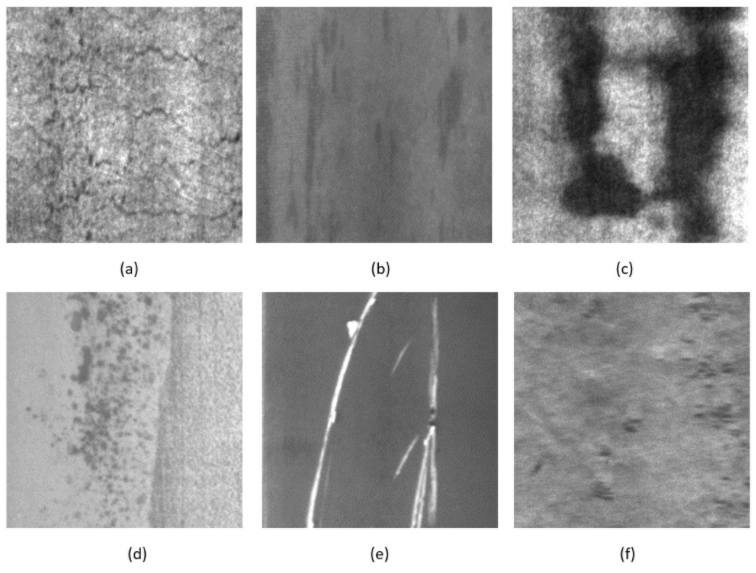 Picture 2. Different classes of defects on the steel surface // NEU surface defect database
Picture 2. Different classes of defects on the steel surface // NEU surface defect database
Food packaging
Developed Computer Vision solutions are accepted much faster when equipped to use the regular or already existing cameras and/or hardware, making the producers invest only in software and decision-making rather than in sometimes more expensive physical novations.
One such example is the packaging date label verification system APRIL Eye developed by OAL Connected with the support of the University of Lincoln, which is directed at food manufacturing and has the goal to reduce food waste as a result of misdating. System scans the product for the needed dated information and verifies it while using the ordinary cameras, making it extremely cost-effective for the manufacturer.
Breakdown prediction and detection
Another great Computer Vision application in manufacturing is the maintenance control, which enables to significantly lower the observation cost and make the malfunction detection easier and closer to instantaneous. As is the case for quality control, cameras can replace humans in dangerous situations or even in the monitoring of the critical infrastructure.
Such a model would detect a sign of abnormality on the camera input and then notify about the malfunction happening, or either initiate an automatic reaction, for example, redistributing the production load until the technical team resolves the detected issue.
Computer Vision applications in Security
The security area is one of the most promising areas of Computer Vision applications right now. This area generally divides into two groups: real-time security observation and access control.
Real-time security
Computer Vision can be more accurate than humans in spotting potentially hazardous objects, such as guns, as all it needs is just to spot a needed pattern, and so it can be used as a surveillance assistant. With a current amount of security cameras, up to hundreds in a single institution, there is sometimes just too much visual information to analyze effectively.
Computer Vision is challenging this and already has numerous advances in the field, no longer susceptible to the human errors mostly caused by hours of continuous observation. Live-feed video detection can help to filter out unneeded footage and focus on some situations that are potentially requiring attention.
Authentication with Computer Vision
Authentication systems also benefit primarily from the Computer Vision-driven solutions. Some technologies already made it to the mainstream market, with the most famous example of Face ID that is now widely used in everyday life.
 Picture 3. Example of facial recognition with the OpenCV library // Beatrice Murch, Sylenius; Wikimedia Commons
Picture 3. Example of facial recognition with the OpenCV library // Beatrice Murch, Sylenius; Wikimedia Commons
However, possible applications of Computer Vision in identification do not stop at face recognition. Identifications by body parameters such as height, width, limb length, and even stride type are developing methods that can be used in complex environments to ensure identification errors are minimal.
Applications of computer vision in security often get intertwined with others. A great example of this was set on a steelworking plant in Latin America, where the automatic surveillance system with Computer Vision was implemented. The system almost eliminated the need for manual surveillance review, but apart from that, the system was also built to detect mechanical dangers and malfunctions. The number of hazardous situations and injuries on the plant significantly decreased after implementation.
Computer Vision applications in Healthcare
While the manufacturing and security applications are enormous in labor optimization, medicine is the area where Computer Vision has possibly the most lifestyle-changing applications.
Disease diagnosing
The most popular and influential Computer Vision application in healthcare so far is disease diagnosing. Due to high performance in pattern recognition, computer vision products have reached the point where it started to outperform human pediatricians in finding some pathologies. Such accuracy can mean that in the future, doctors will spend more time consulting the patient than on diagnosing technicalities.
With many diagnostics requiring highly-skilled doctors that are sometimes not available in some places, highly accurate diagnostics powered by Computer Vision can substitute some of these functions for a lesser cost.
As another significant benefit, Computer Vision systems can be used for the effective early diagnosis of illnesses. For example, there are a lot of companies that use it to detect lung and breast cancer early using MRI scans. Computer Vision can also be used in real-time with the patient examination to create an interactive interface with spotting features to examine.
Blood loss
One of the areas where Computer Vision is already sure to outperform human observation is a measurement of blood loss during childbirth. Such situations sometimes resulted in deaths due to unaccounted blood. Still, with a new Computer Vision software easy enough to run on an iPad, which is already implemented in some hospitals, there is a way to assume where the help is needed correctly.
COVID-19
Another example of how adaptive Computer Vision approaches are revealed itself in the number of applications aimed to fight COVID-19. Apart from the diagnostics models which can differentiate COVID-19 pneumonia with more than 90% sensitivity, there were a lot of supportive models developed, for example, social distancing control system, which identifies people who are closer than 2 meters apart, or detection of people who are or are not wearing the face mask.
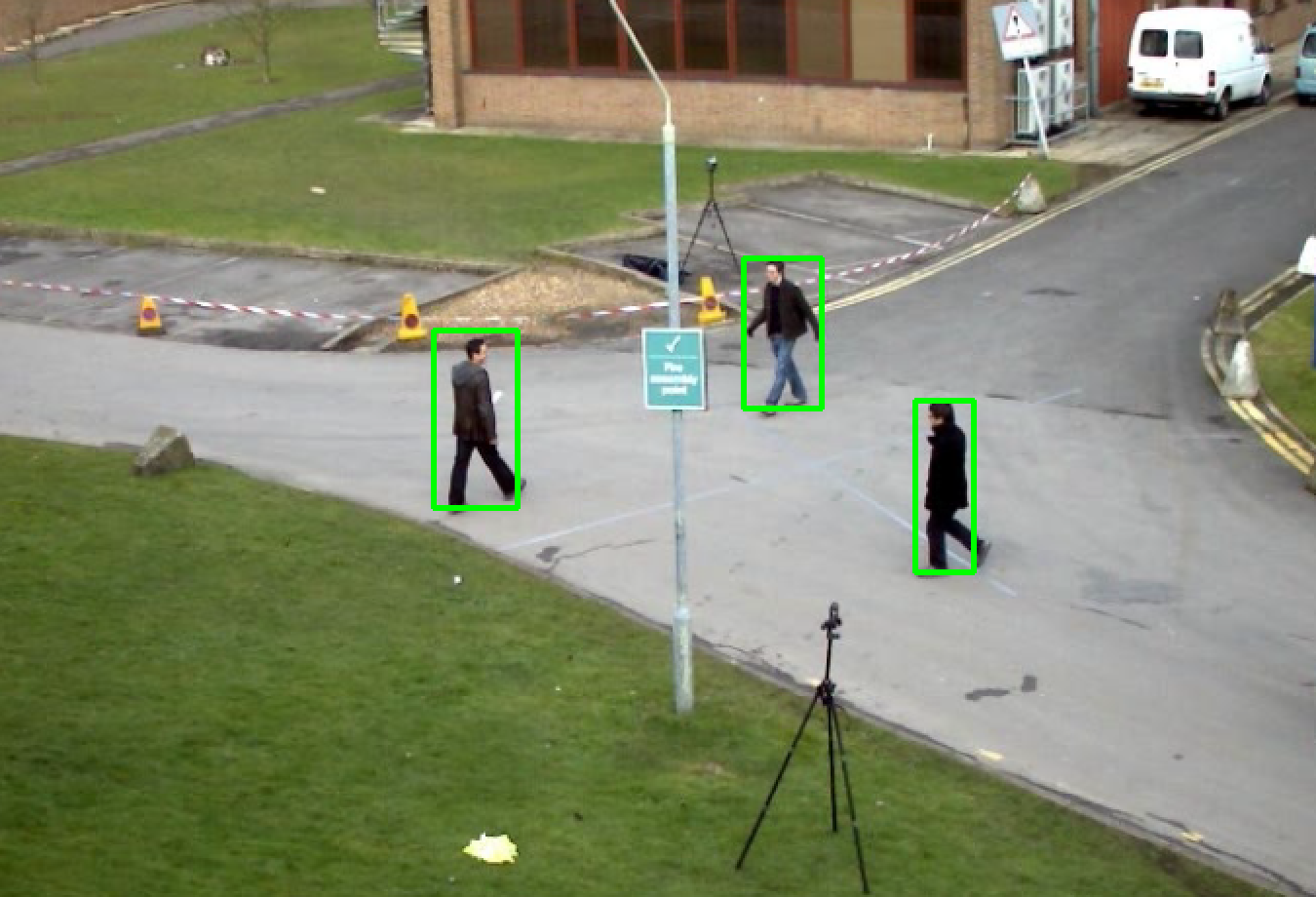 Picture 4. Social distancing control system using Computer vision // Basile Roth
Picture 4. Social distancing control system using Computer vision // Basile Roth
Computer Vision applications in Transportation
While talking about Computer Vision, it is impossible to avoid the transportation category as it is the field where its applications have become the most famous.
Self-driving cars
Self-driving cars technology is possibly the field where the transition of decision-making to AI-powered technology became the most apparent for the entire world. Decisions made by cars are primarily based on data gathered from many cameras installed in different positions. A number of other technologies, such as accident prevention, also mainly relate to visual data.
Other popular computer vision examples in transportation include license plate recognition, real-time traffic violation analysis, and smart traffic systems that are in large developments.
The road applications became so developed that recently, the multi-camera systems that detect the dangerous driving style or driver fatigue and issue the respective warnings started to be installed in the corporate delivery trucks by companies such as Amazon.
Promising Computer Vision project ideas
Despite the possible impression that computer vision AI examples have found their way into every industry possible, there are still many applications that are waiting for optimal Computer Vision solutions. Here are some of the Computer Vision project ideas that are largely discussed but still have a lot of unexplored potential that can be used for boosting the project ideas:
- Handwriting recognition – slightly more challenging than character recognition, and becomes more challenging with different writing styles;
- Human gesture recogniser – despite a lot of research in the area, there are still many unexplored cultural situations. Sign language recognition is one of the most classic and yet challenging applications.
- Image captioning – the borderline area with Natural Language Processing, which allows natural language processing experts to find the best explanations for what is pictured in the image;
- Sports tactics recogniser – for some of the sports, such as American football, some existing models can determine the tactical build from the footage, but the area still has a lot to explore.
Examples of computer vision in agriculture
Technology is rarely associated with the field, but this is where it starts to deliver one of the most practical benefits. In agriculture, computer vision helps save not only money, but also water, fertilizers, time, and, equally important, human efforts.
Today, drones and cameras in real time analyze the state of fields, determine the degree of maturity of crops, assess the level of drought, and even notice the first signs of painful plants. Algorithms process images and give the farmer accurate recommendations: where to water and when to spray, which site needs re-seeding. This is not a “weather forecast on the eye”, but an accurate agronomy based on data.
Separately, it is worth noting the automation of harvesting: for example, robots equipped with computer vision are already able to collect strawberries or tomatoes, orienting themselves to color and shape without damaging the product.
Such a computer vision example is especially relevant for countries with a shortage of agricultural workers. Computer vision does not replace people here – it takes on routine, exhausting tasks and allows you to act faster.
Using computer vision in retail
In a retail environment where every move of the buyer is a potential opportunity to increase the check, computer vision technologies allow not only to observe, but also to act.
Video analysis systems help stores track traffic on the trading floor, understand where people stay the longest, and where they pass by. It affects the location of the shelves, the zoning, and the layout of the goods.
Checkout cameras automatically recognize products, shortening queues. Self-service systems with computer vision minimize scanning errors and reduce losses from unscrupulous buyers.
Also, with images, you can analyze the stock: AI recognizes empty shelves and immediately gives a signal for questioning. This is especially true in the period of promotions and sales, when efficiency affects sales directly.
You can read more about how it works and the results in our article on image recognition for retail.
Sport: where computer vision plays
In the sports industry, computer vision solves problems that until recently seemed impossible without a human eye and a stopwatch.
Video tracking systems allow you to track the movements of each player and ball in real time. This is used by both coaches and analysts to assess tactics, player fatigue, and the quality of interaction in the team.
During matches, technology helps judges. For example, cameras with computer vision fix the position of the ball on the line of the gate – this helps in making controversial decisions without delays.
Brands and media companies also benefit: based on video analysis, you can automatically create highlights, segment interesting moments, and evaluate when the viewer switches the channel. All this allows you to make sports content more accurate, dynamic, and personalized.
What are the challenges and risks associated with computer vision?
Despite impressive progress, computer vision AI application has their limitations, which should be known before the introduction. Nevertheless, a team of professionals can help fix all the problems!
The first is the quality of the data. If the camera works in poor lighting, low resolution, or mechanical failure, the model will start to make mistakes. And mistakes are expensive here: from misjudging a product defect to ignoring suspicious behavior in security systems.
The second factor is privacy. The installation of video cameras in public places, automatic analysis of the behavior of clients or employees requires legal and ethical justification. This is especially true in countries with tough data protection laws.
Another risk is retraining. A model trained on one type of image can misinterpret others. As an example of computer vision, a system that is well recognizable strawberry in Ukrainian fields may be mistaken in the analysis of the same berries in Spain because of the difference in varieties, color buds, and lighting.
Computer vision is not a box solution. It requires adaptation, testing, and auditing. And the trusted technology partner here is critically important.
What is the future of Computer Vision? New Applications to Come
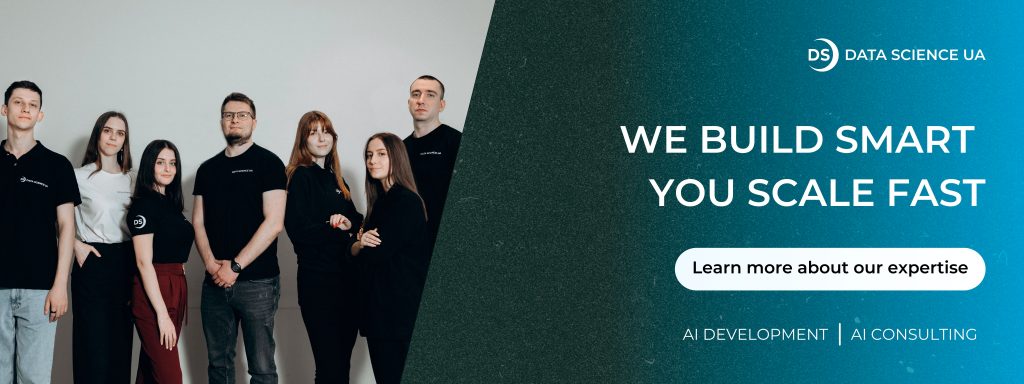
Data Science UA team assist you in developing your business!
Computer Vision is a rapidly developing subject with new, surprising computer vision application examples arising almost every month, and it is certain that it has a lot more to offer. According to the mentioned earlier report published by the Grand New Research, the Computer Vision market is expected to grow with an annual rate of 7.6%, passing the US$19 billion mark by 2027, while other reports predict reaching US$17.4 billion in 2024.
In any case, with further development of more accessible hardware options and cloud computing, the possibility of using Computer Vision applications is expected to be available for more businesses and much more data, fueling its spread.
Computer Vision technologies can become more integrated with other fields, for example, with the rising Augmented Reality technologies, which will create a more realistic perception. The connection of Computer Vision and Natural Language Processing can also create new borderline technologies, which in general will try to translate the world as visible to humans into a textual format, creating a wide range of possible applications.
Another possible future Computer Vision application can be the predictive area, which may gather popularity with new application of computer vision in smart city management, traffic regulation, or crime prevention. Possible tasks include determining suspicious activities faster than humans and potentially preventing crimes before they happen. More on that in the computer vision trends review.
Conclusions
Computer Vision is one of the most challenging areas of the rising Artificial Intelligence. Computer Vision technologies became part of the wave that is now pushing our technology ahead.
And despite rapid development, there are still countless applications that have not been discovered yet or are waiting for an appropriate business problem to announce itself. Therefore, as a field who already passed its initial forming stage and by now has realized how much it can theoretically do, Computer Vision promises a bright future to the already great present.
FAQ
What companies use Computer Vision?
A large number of companies use Computer Vision today. This list starts from such technical giants like Google, Amazon, Facebook, and Tesla, to some specific tasks in thousands of smaller companies or startups worldwide who work on the Computer Vision as their main direction, sometimes very unique. The most curious examples include NAUTO, which work on commercial driving safety with accident prediction, Verkada, which allow operating the intelligent security cameras without hardware improvements remotely, Hawk-Eye Innovations, which work on Computer Vision in sports technologies, and even the artificial sight technology OrCam which helps customers with disabilities of visual apparatus to recognise text, currency, or even people.
What is the difference between Machine Vision and Computer Vision?
Machine Vision is a technology developed specifically for enabling the machines used in industry to have recording hardware and software, but it does not require interpreting the results in itself. On the other hand, computer vision is used for understanding and interpreting the results and appeared later than Machine Vision. So, Computer Vision often works on the data provided by Machine Vision systems.
What are Computer Vision techniques?
The main techniques that Computer Vision operates with are:
- Image Classification, where images are labeled with different classes;
- Semantic Segmentation, where areas on the image are labeled;
- Instance Segmentation, where the areas belonging to each defined label are found and determined with overlapping;
- Object Detection, where objects on the image are localized precisely;
- Object Tracking, where we not only localize the object but then follow its location on the image in subsequent frames.
Why is Computer Vision so hard?
This mainly follows from the differences between how we and machines see the world. All data captured by cameras is stored in a multi-channel digital way. Therefore all the work, all pattern recognition by any Computer Vision algorithm is based on comparing natural tendencies in numbers. And while it still can find many patterns, the algorithm has no empirical idea what that could mean. It compares numbers until it finds suitable ones without additional context. So from this, it is the hardest for algorithms to grasp image context.
How do I start a computer vision career?
To start your Computer Vision career, it will be beneficial to acquainting yourself with some basic calculus. It is in large the foundation on which the Computer Vision algorithms are built. In any case, you should become familiar with Python or C++ languages next as the most developed Computer Vision libraries are usually either present in or made for these two languages.
Learning the Computer Vision itself right now is remarkably easy and accessible. You just need to subscribe for one of the numerous Computer Vision courses, for example, the famous Deep Learning specialization by Andrew Ng, if the goal is to become familiar with Neural Networks. During this time, it is a perfect moment to start making some starting Computer Vision projects yourself to try to be more used to its specifics and methods.


